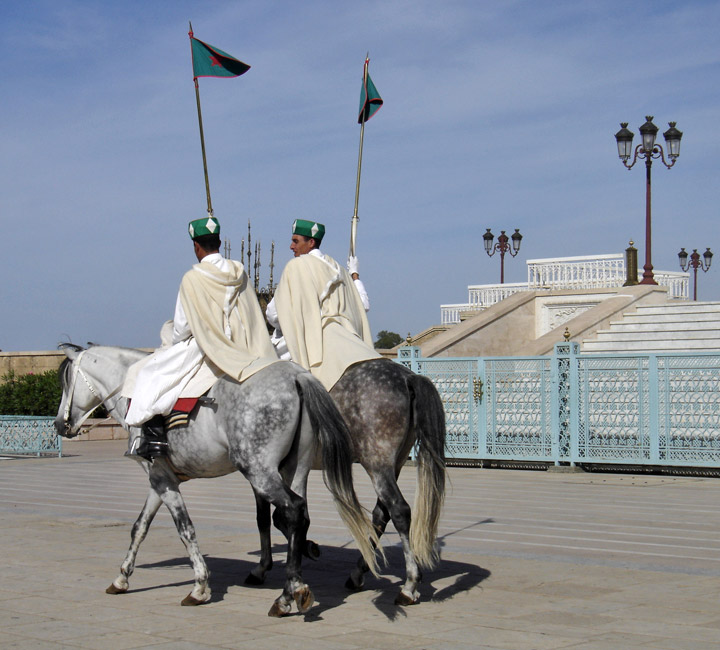

Mausoleum
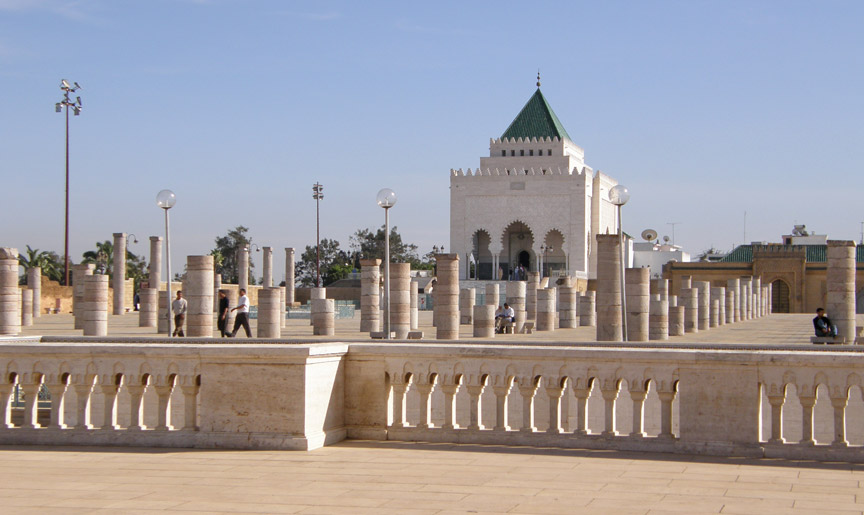
Mausoleum of Mohammed V
The Mausoleum of Mohammed V contains the tombs of the Moroccan king and his two sons, late King Hassan II and Prince Abdallah. It is located on the opposite side of the Hassan Tower on the Yacoub al-Mansour esplanade in Rabat, Morocco. The building is considered a masterpiece of modern Alaouite dynasty architecture, with its white silhouette, topped by a typical green tiled roof. Its construction was completed in 1971. Hassan II was buried there following his death in 1999.
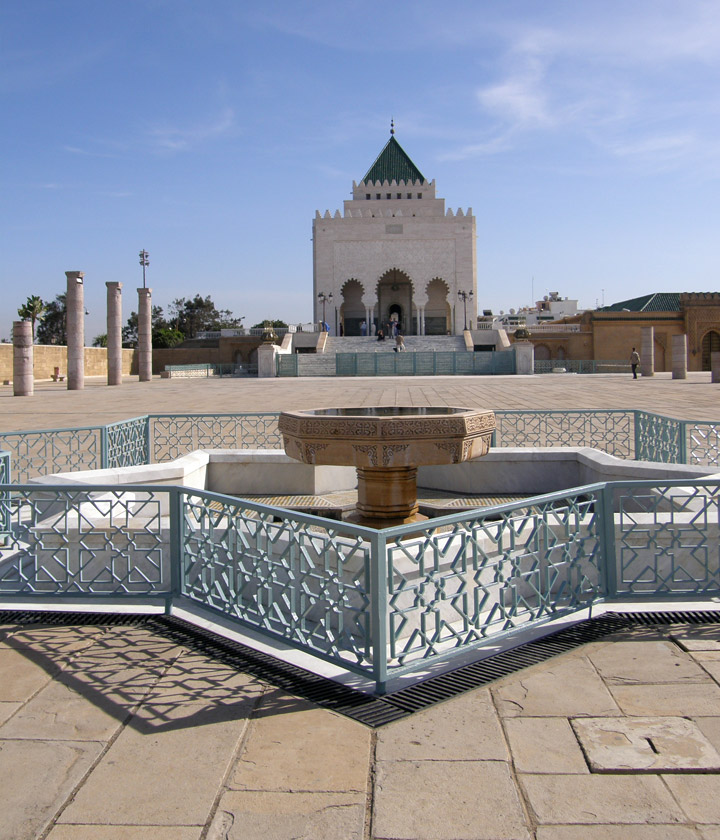
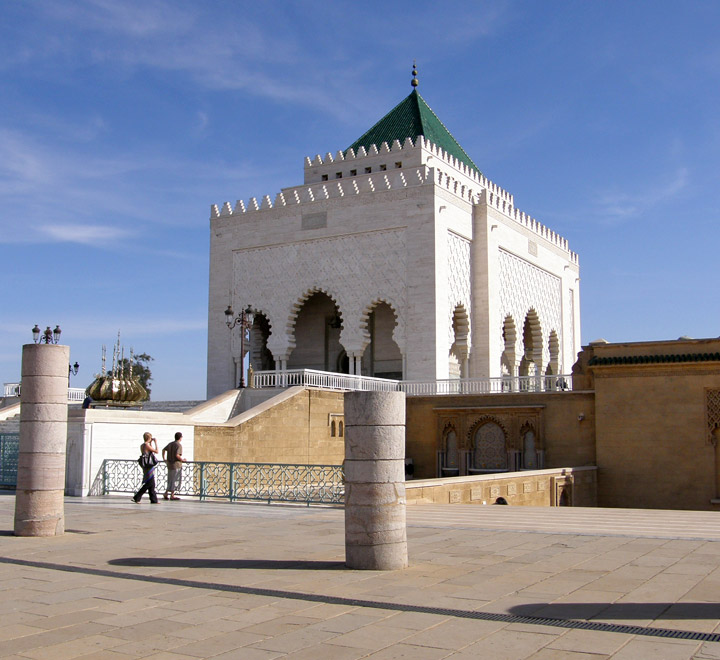
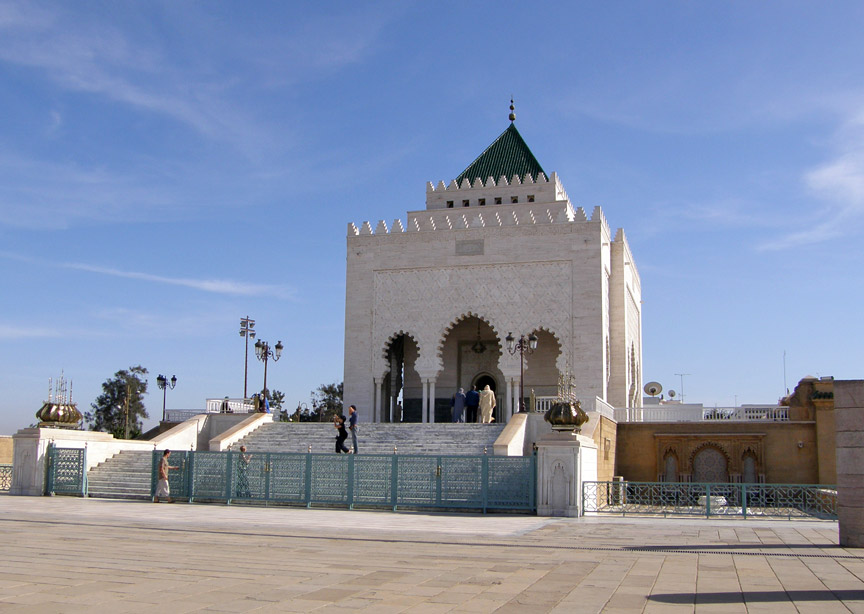
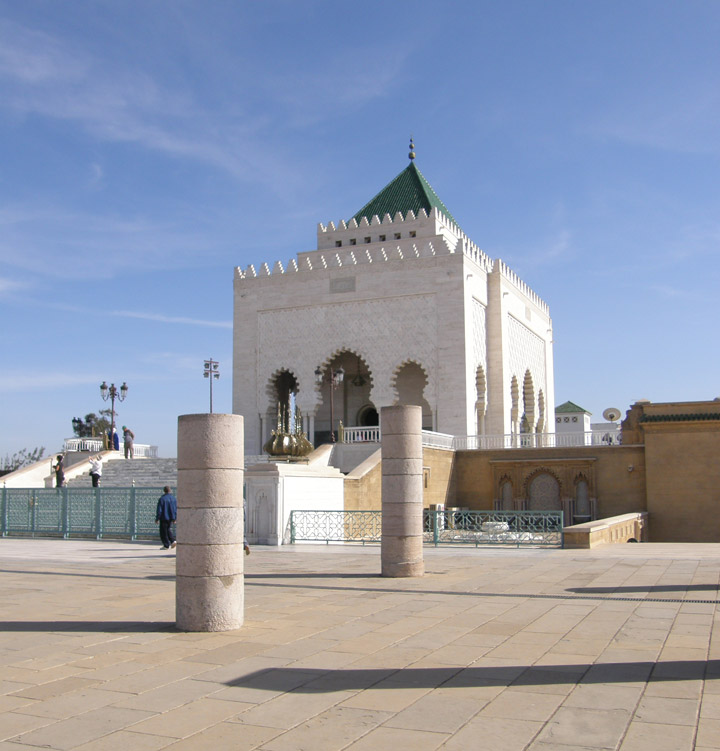
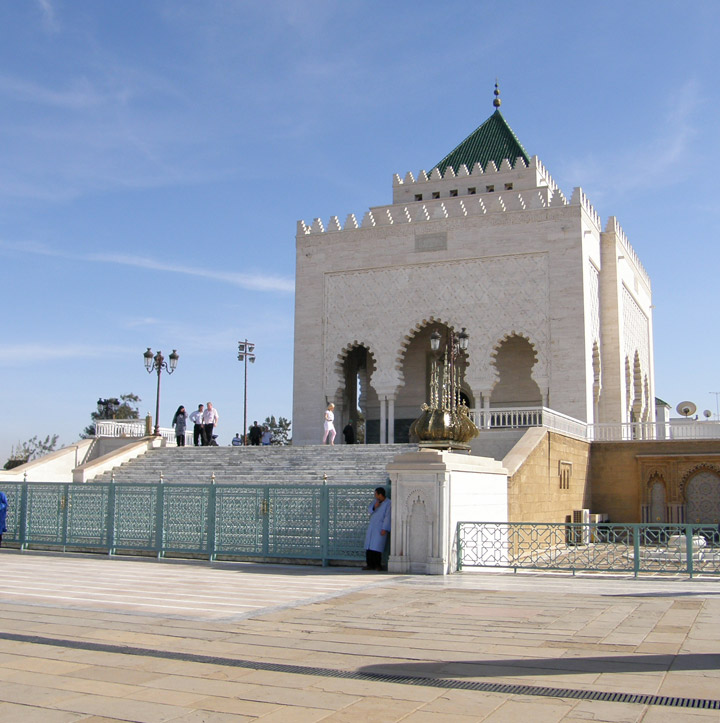
Mohammed V
Sultan of Morocco from 1927 to 1953
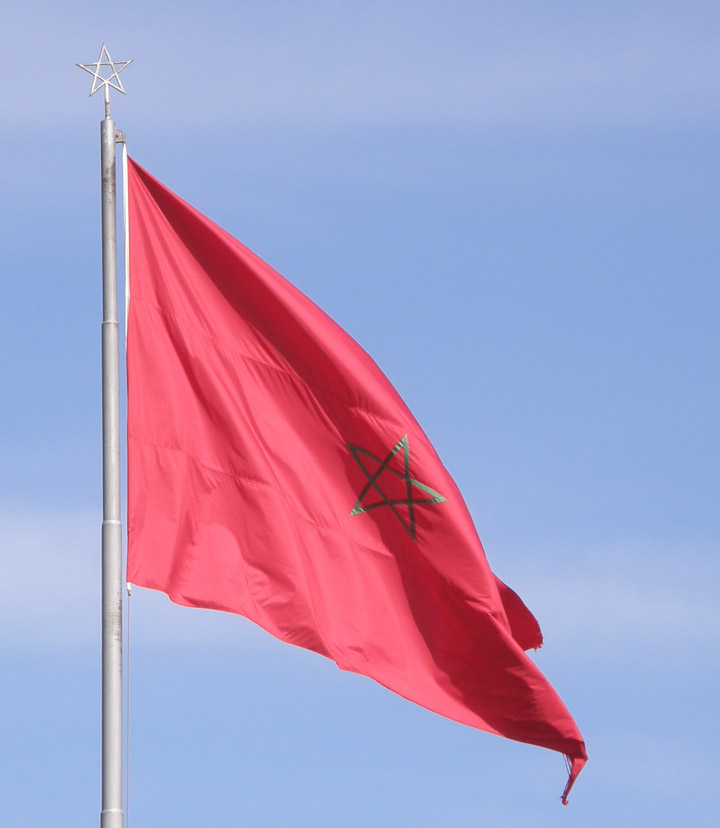
Moroccan Flag
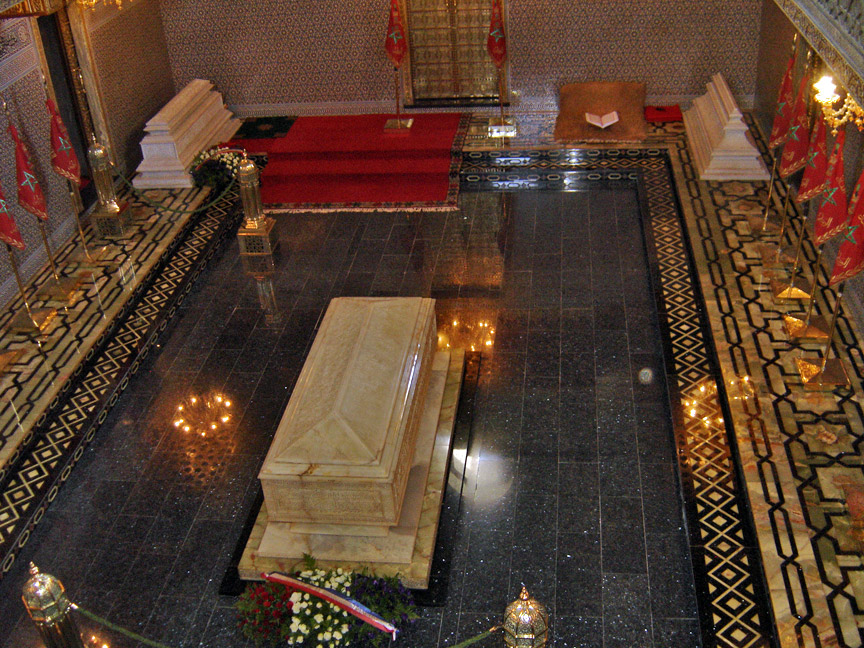
Tomb Mohammed V
tombs of his two sons, late King Hassan II and Prince Abdallah behind
Mohammed V (August 10, 1909–February 26, 1961) (Arabic: محمد الخامس) was Sultan of Morocco from 1927 to 1953, exiled from 1953-55, where he was again recognized as Sultan upon his return, and King from 1957 to 1961. He was the son of Sultan Yusef, upon whose death he succeeded to the throne. He was a member of the Alaouite Dynasty.

tomb of King Hassan II
On August 20, 1953, the French who were occupying Morocco at the time forced Mohammed V and his family into exile on Corsica. A relative of his, Mohammed Ben Aarafa, was placed on the throne.
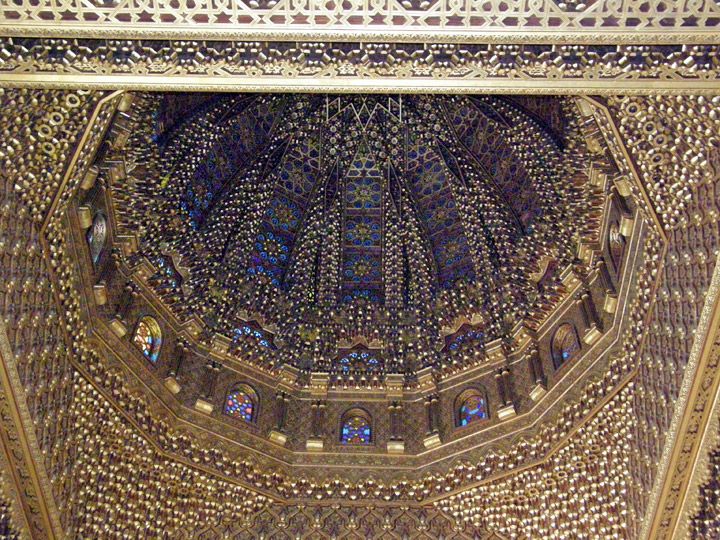
Mausoleum Dome
Mohammed V and his family were then transferred to Madagascar in January 1954. Mohammed V returned from exile on November 16, 1955, again recognized as Sultan after active opposition to the French protectorate. In February 1956 he successfully negotiated with France for the independence of Morocco, and in 1957 took the title of King.
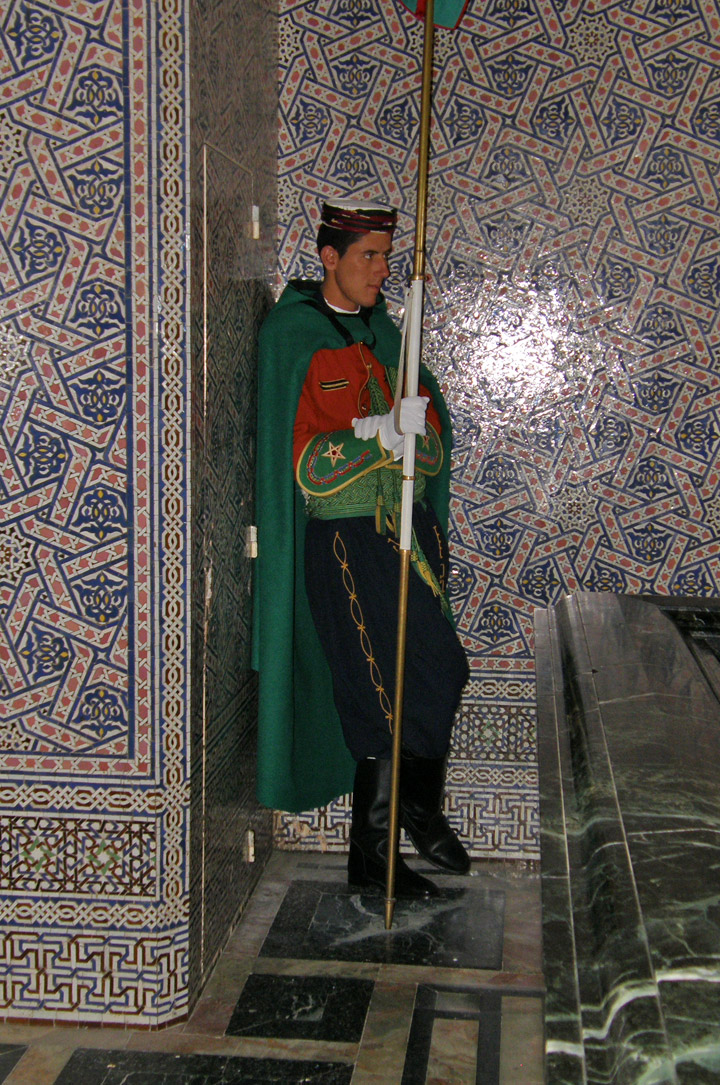
attentive guard
Among his wives was Lalla Abla bint Tahar, who became the mother of his son and successor Hassan II.

entrance guard
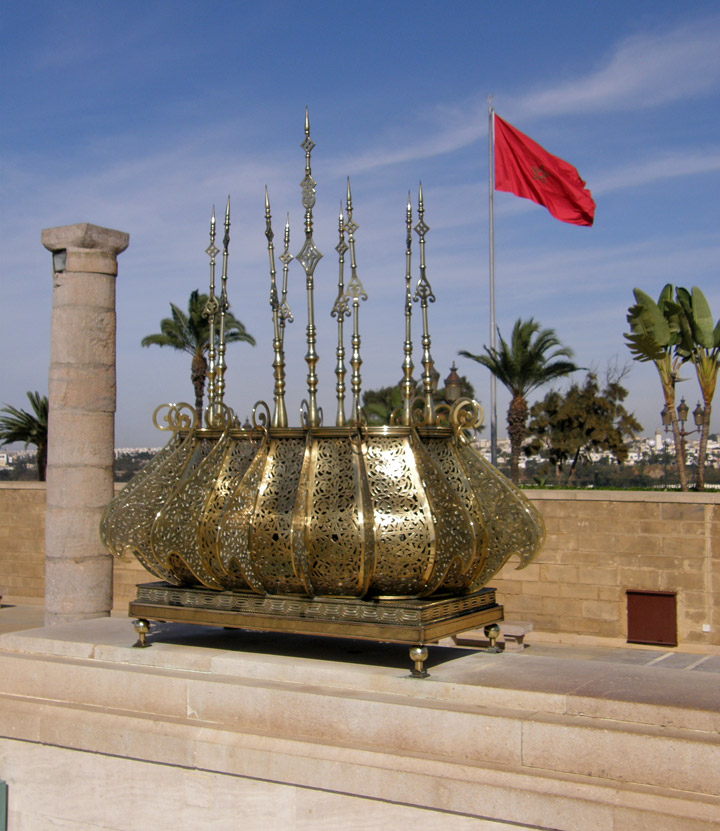
The Mohammed V International Airport of Casablanca is named after him, as well
as numerous universities and various public spaces across Morocco. There is an
Avenue Mohammed V in nearly every Moroccan city.
Text from Wikipedia
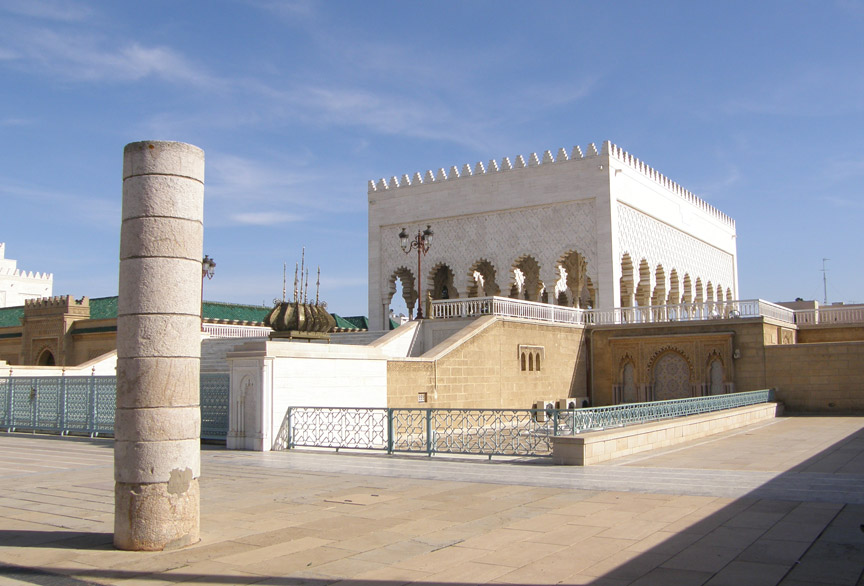
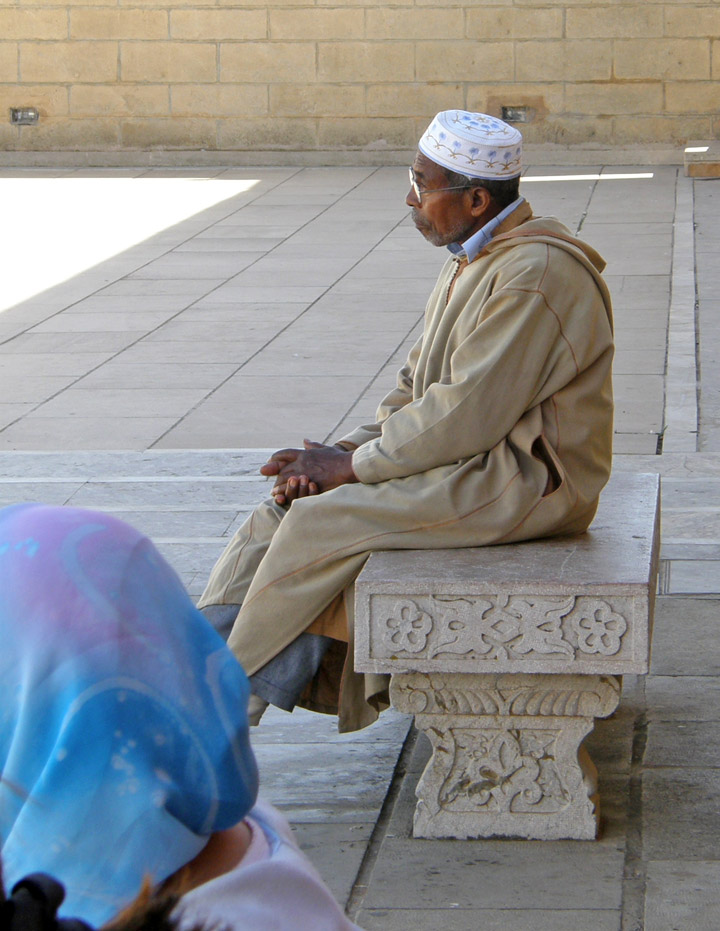
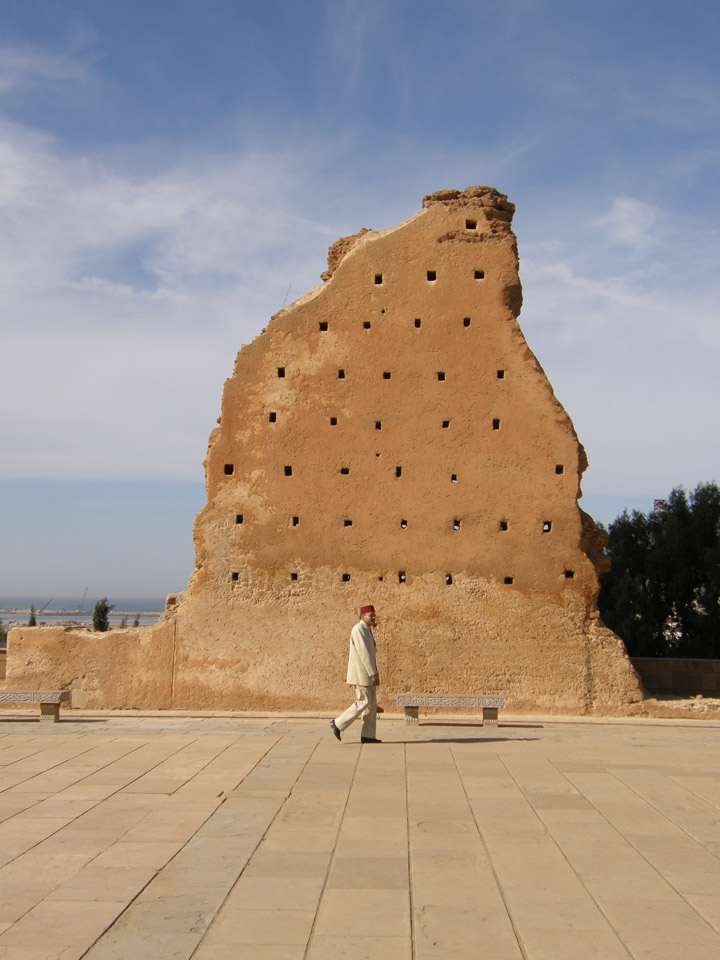
Hassan Tower
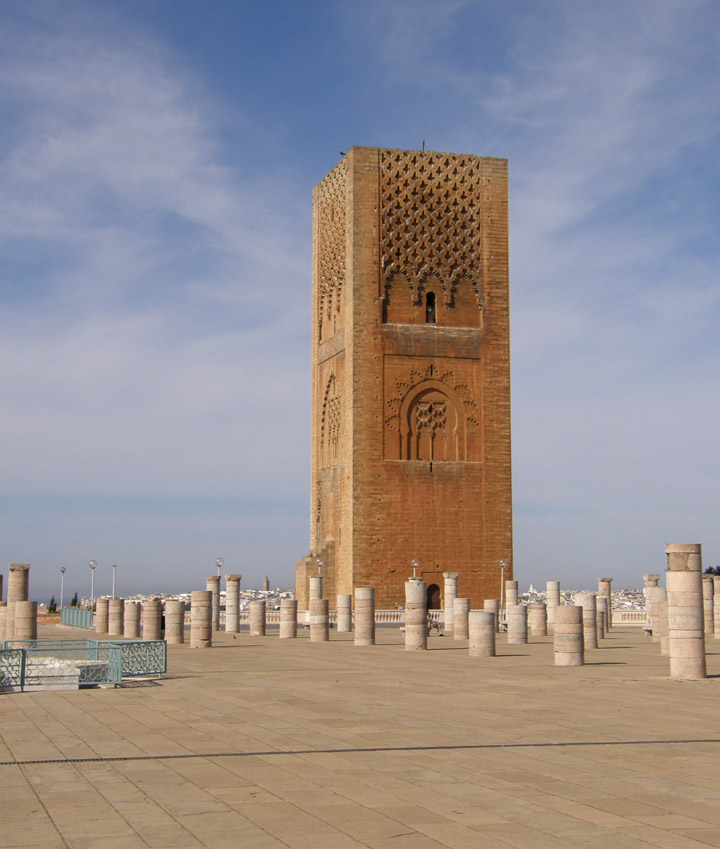
the minaret of the incomplete mosque
Hassan Tower or Tour Hassan (Arabic: صومعة حسان) is the minaret of an incomplete mosque in Rabat, Morocco. Begun in 1195, the tower was intended to be the largest minaret in the world along with the mosque, also intended to be the world's largest. In 1199, sultan Yacoub al-Mansour died, and construction on the mosque stopped. The tower only reached 44m (140ft), about half of its intended 86m (260ft) height. The rest of the mosque was also left incomplete, with only the beginnings of several walls and 200 columns being constructed.
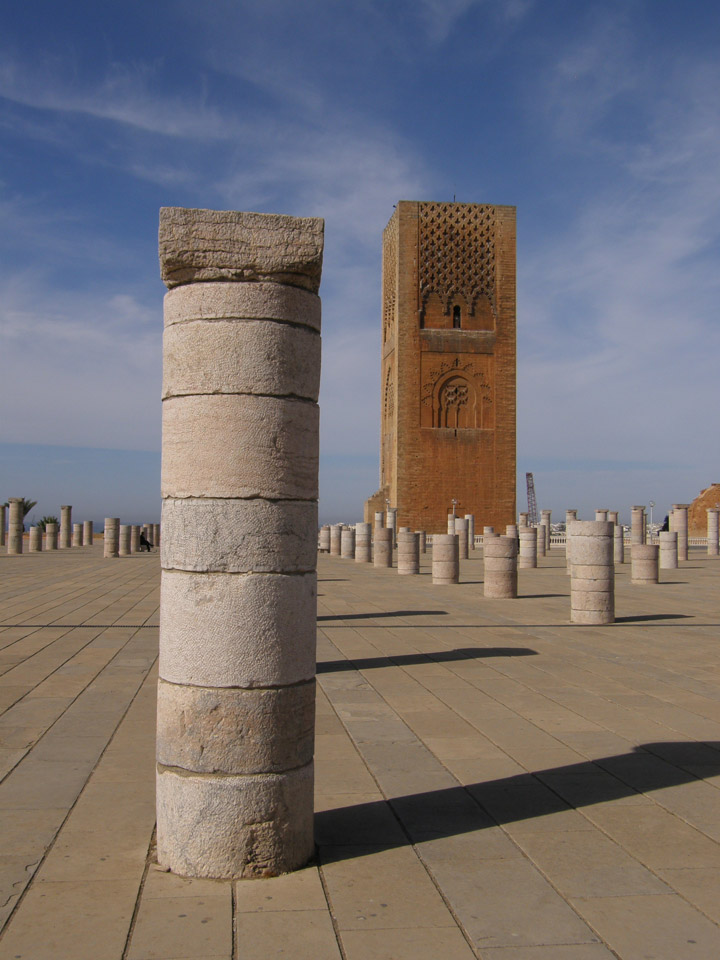
Instead of stairs, the tower is ascended by ramps. The minaret's ramps would
have allowed the muezzin to ride a horse to the top of the tower to issue the
call to prayer.

Yacoub al-Mansour was a member of the Almohad Dynasty, a berber, muslim empire
in West Africa and Spain. The tower, according to tradition, was designed by an
architect named Jabir who used similar a similar design plan for Hassan's sister
tower, the Giralda in Seville, Spain. Both of the towers were modeled on the
minaret of another one of Jabir's designs, the
Koutoubia Mosque in Marrakech.
Renaissance Spaniards later added a western style top to the Giralda, which was
converted from a minaret to a bell tower for the Seville Cathedral after the
Reconquista.
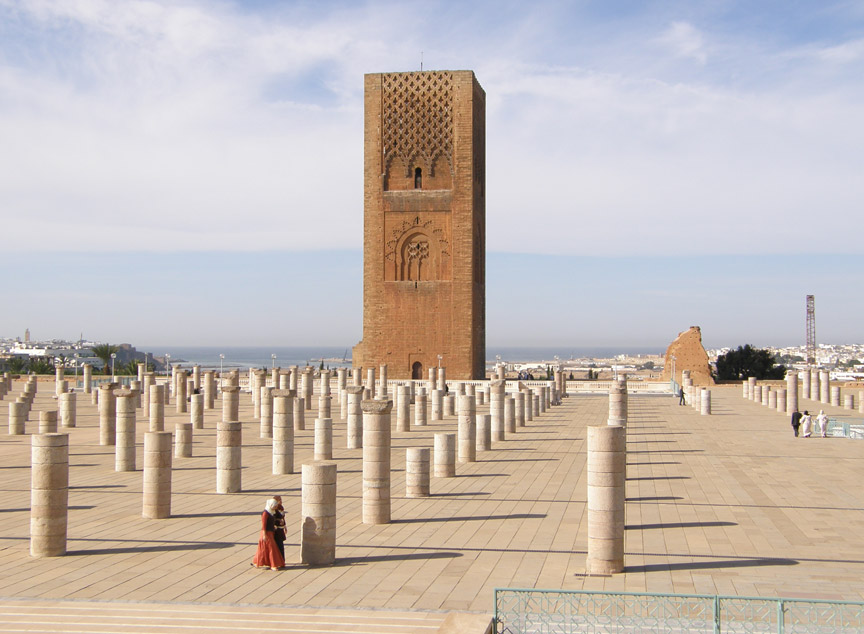
The tower, along with the remains of the mosque and the modern Mausoleum of
Mohammed V, forms the most important historical and tourist complex in Rabat.
Text from Wikipedia
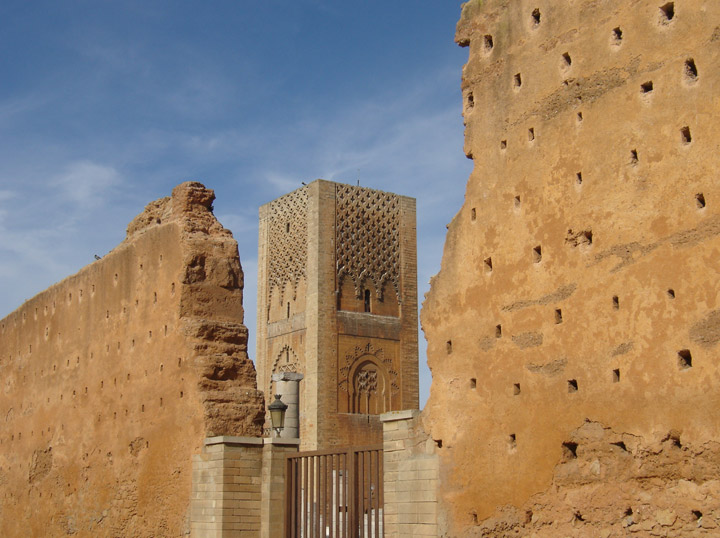
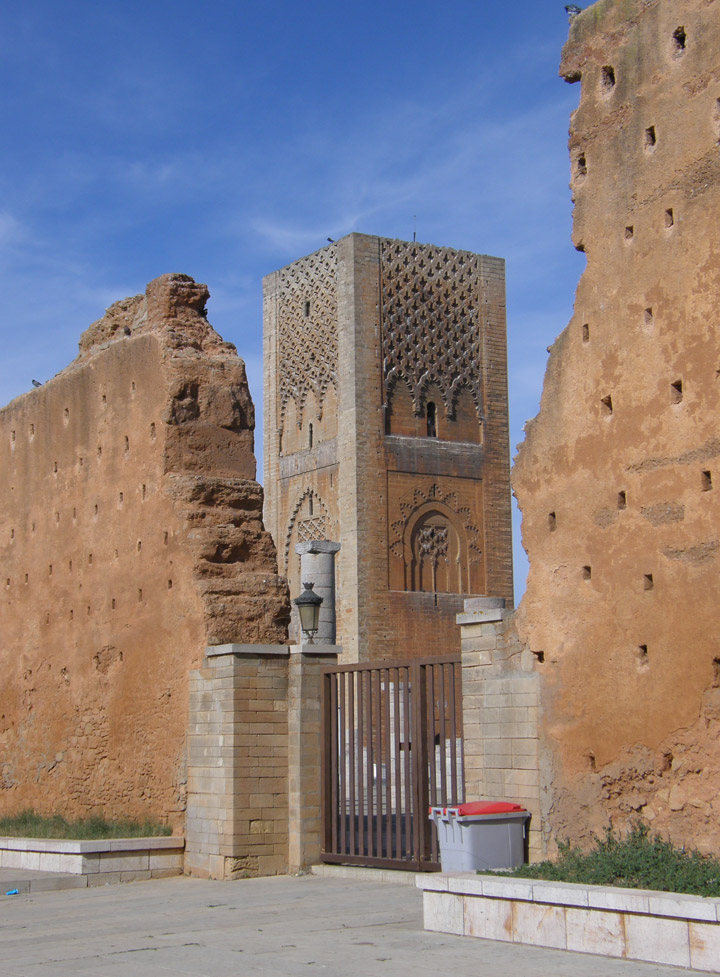
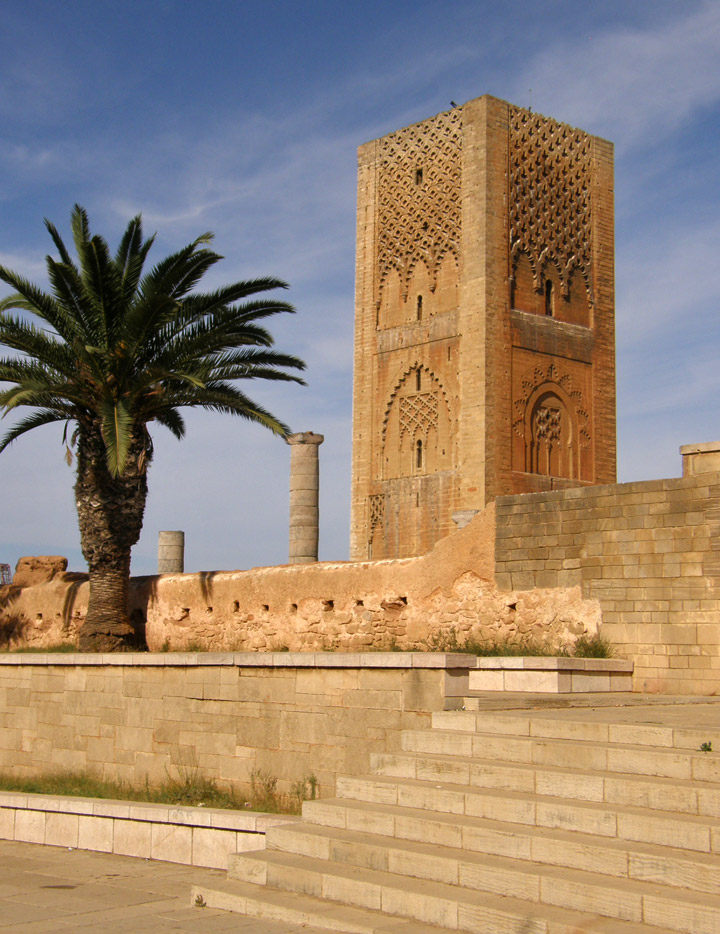

Honor Guard at the Mausoleum
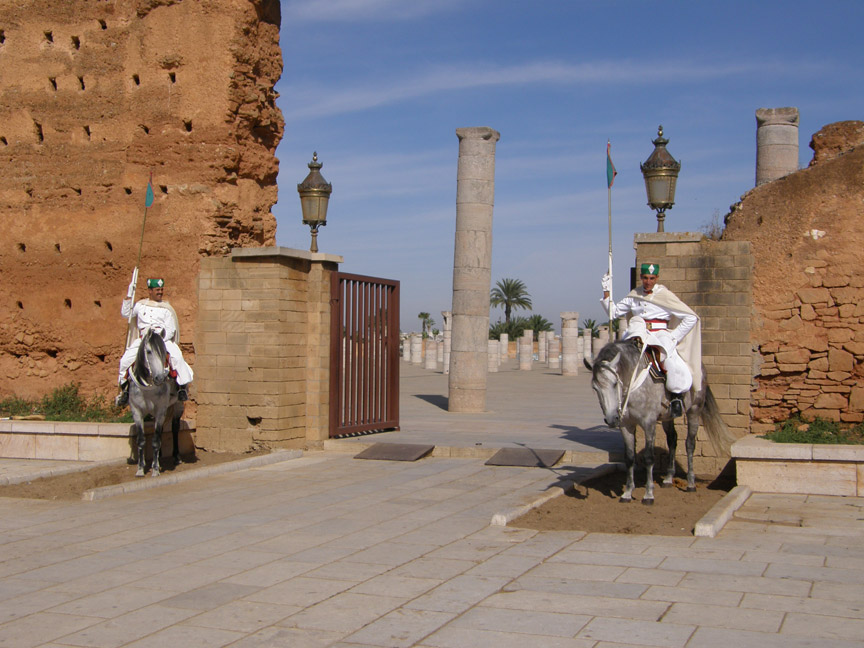
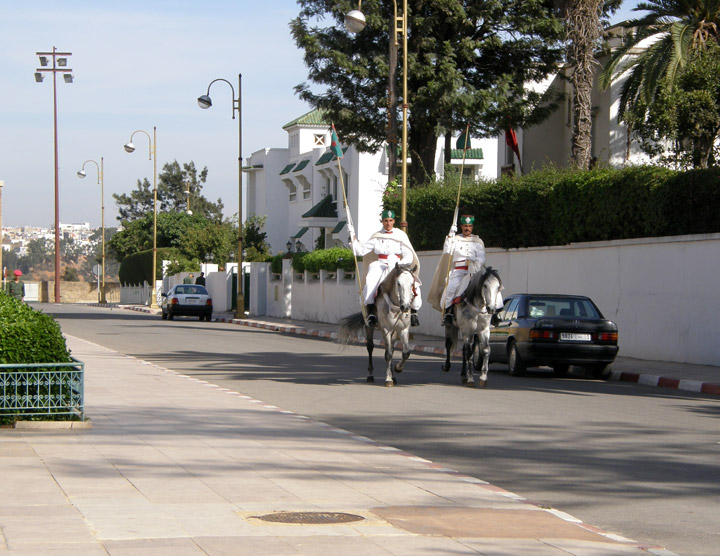
relief guards on the way
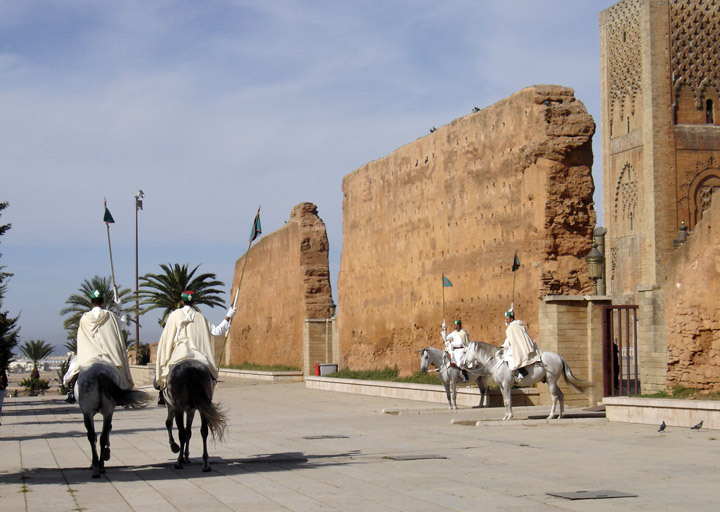
approaching for the exchange of the guard
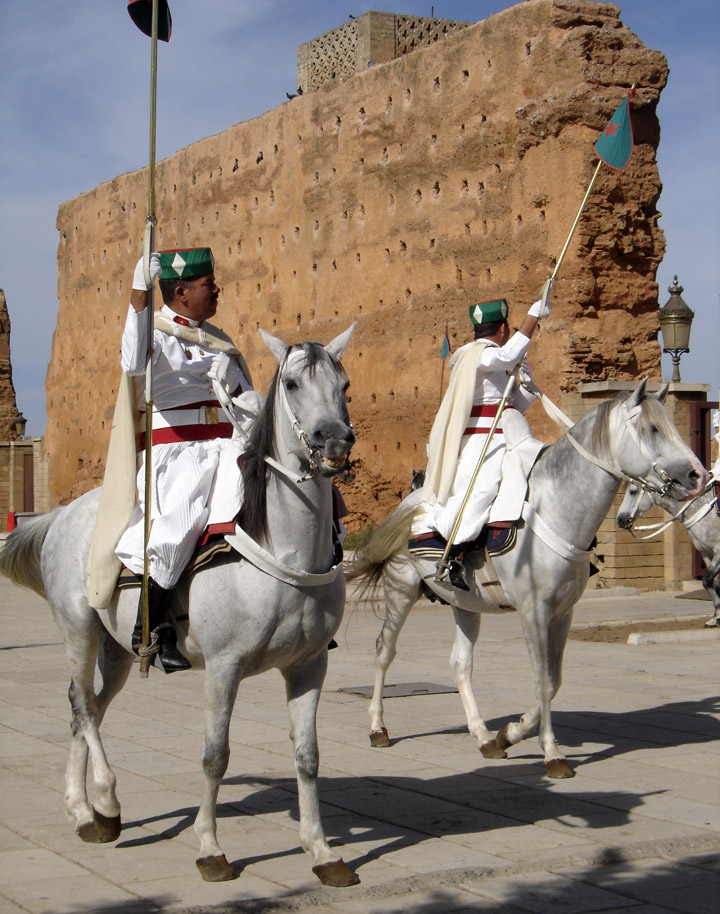
presenting
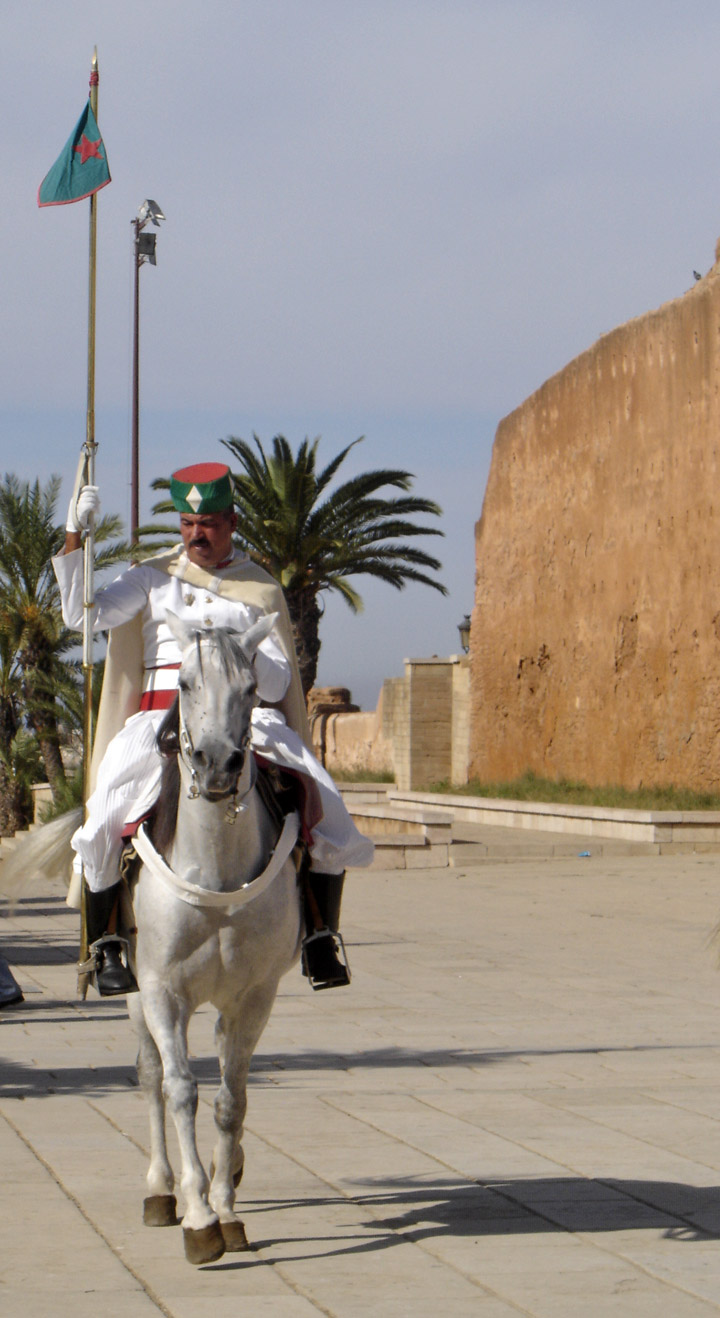
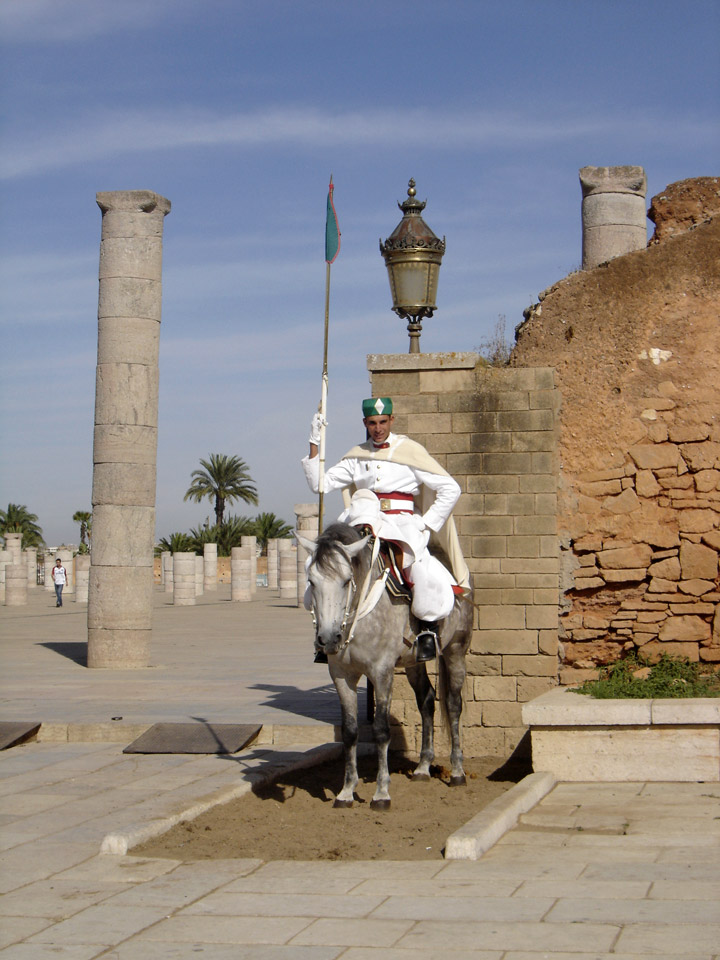
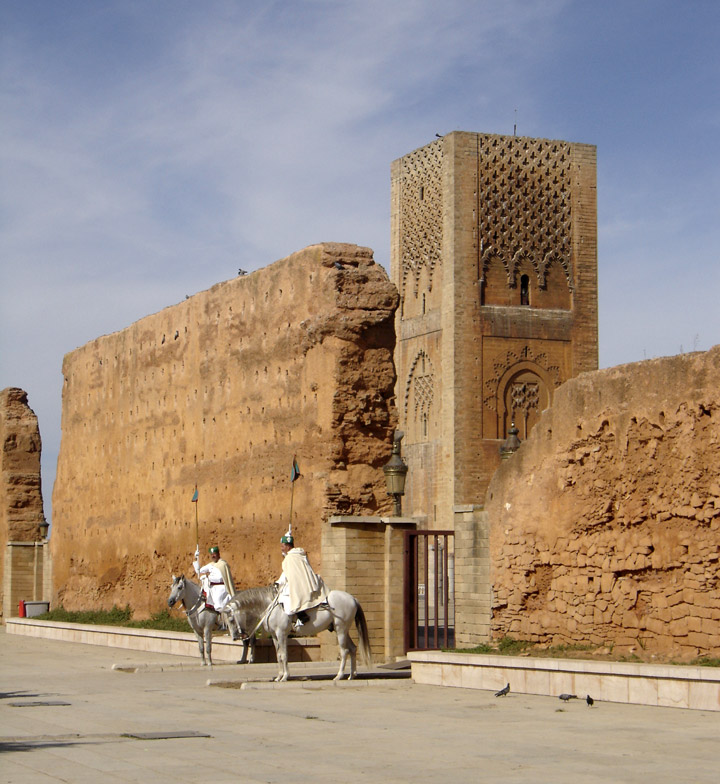

returning to the stables
